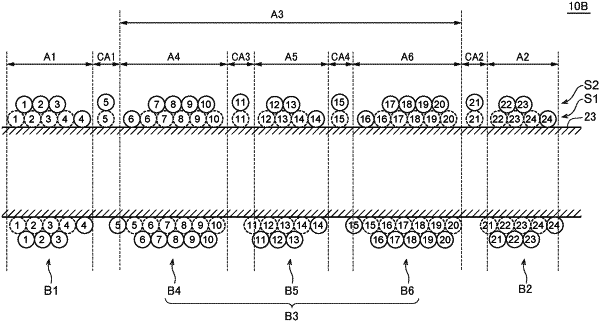| CPC H03H 7/427 (2013.01) [H01F 17/04 (2013.01); H01F 17/045 (2013.01); H01F 27/006 (2013.01); H01F 27/06 (2013.01); H01F 27/2823 (2013.01); H03H 1/00 (2013.01); H03H 7/09 (2013.01); H01F 2017/0093 (2013.01); H03H 2001/0035 (2013.01); H03H 2001/0092 (2013.01)] | 18 Claims |

|
2. A common mode filter comprising:
a winding core part; and
first and second wires wound in a same direction around the winding core part,
wherein the first and second wires constitute a first winding block on one endmost side in an axial direction of the winding core part, a second winding block on another endmost side in the axial direction of the winding core part, and a third winding block positioned between the first and second winding blocks,
wherein a number of turns in the third winding block is larger than each of numbers of turns in the first and second winding blocks,
wherein the first and second wires cross each other in a first area located between the first and third winding blocks and in a second area located between the second and third winding blocks,
wherein the first and second wires do not cross each other in each of the first, second, and third winding blocks.
|